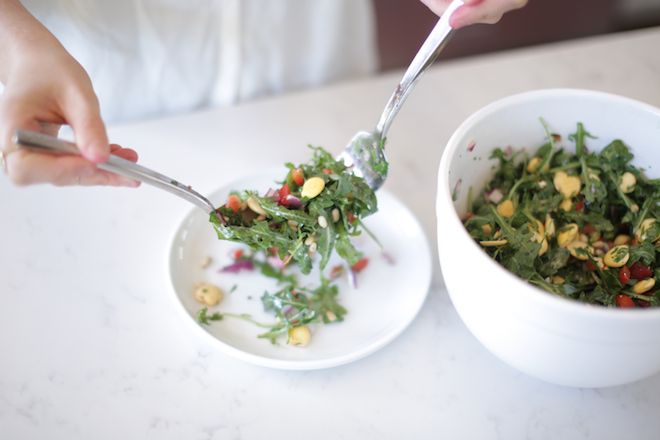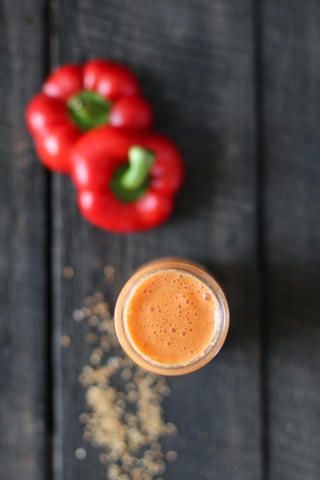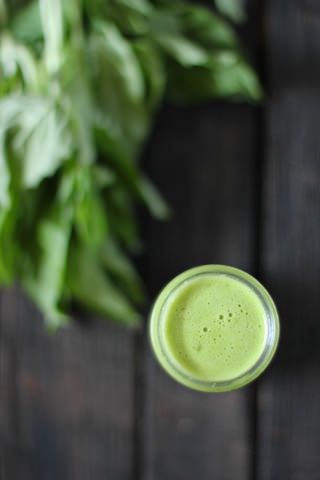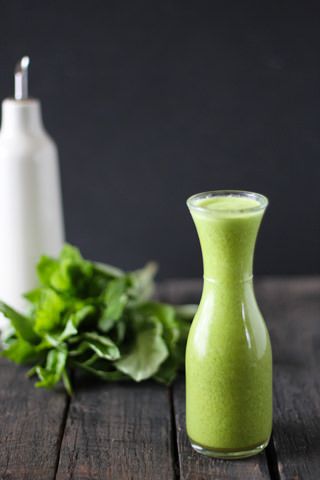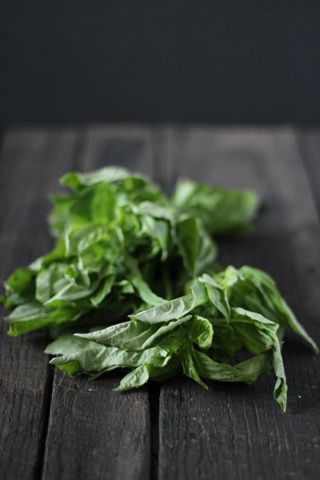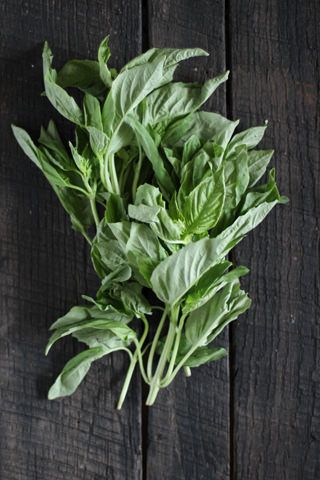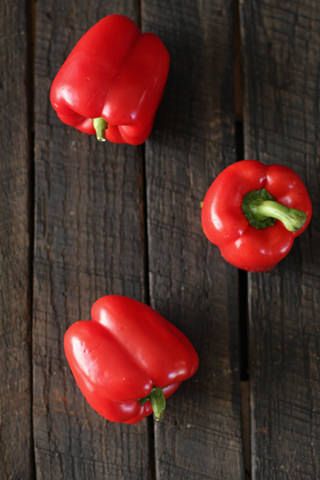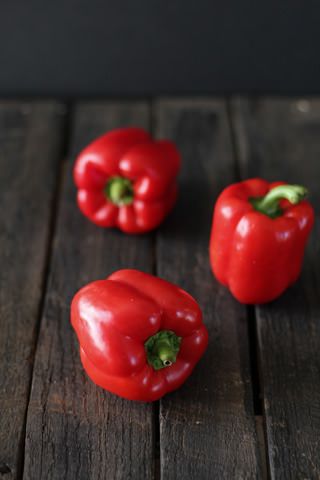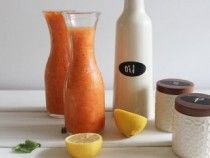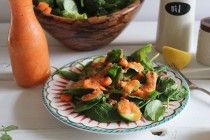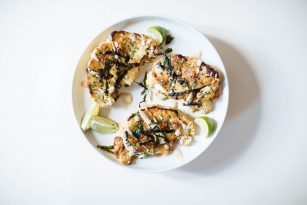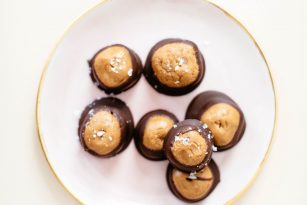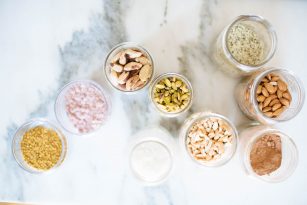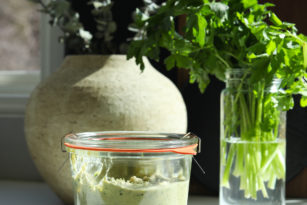You’ll never want store-bought again.
Today’s post is dedicated to all things salad dressings, it’s your Definitive Guide to Stripped Salad Dressings. I hope you all have been enjoying the Definitive Guide to Salads and Nutrition Stripped Snacks. In my previous post, we talked about the amazing dark leafy salad greens and all the fun mix-in’s to take your plain ole’ salad to the next level. Now, let’s talk about the best part…finding the perfect wardrobe (a.k.a. dressings) to dress those naked salads!
What’s a dressing? Dressings are a way to add flavor and texture, which also keeps the salad components together. Typically, wet ingredients are combined (a.k.a. emulsified) with some type of oil and an acid with additional flavorings. Traditionally salad dressings come in several textures and thicknesses from thick and creamy (i.e. ranch) to lightweight vinaigrettes (i.e. Italian). Choosing the best dressing (in terms of best quality ingredients), can either make or break a healthy salad.
Why make your own salad dressings? Ain’t nobody got time for that!… yeah, you do. Making homemade dressings takes away the guessing game of wondering how to pronounce those questionable ingredients from store-bought dressings and also wondering how “good” or “bad” they are for you. When venturing into the salad dressing aisle you may be overwhelmed (I know I am!), there are hundreds of salad dressings! If you read the ingredient list (which I hope you do…), you’ll see a long list of those highly processed and questionable ingredients I often call out. High fructose corn syrup is still the biggest offender, especially found in low-fat dressings.
Lets take a look at the ingredient list of a very common fat-free salad dressing brand: Water, Sugar, Vinegar, Tomato(es) Paste, Salt, Contains 22% or less Cellulose Gel, Soybean(s) Oil, Xanthan Gum, Tomato(es), Onion(s), Propylene Glycol Alginate, Cellulose Gum, Potassium Sorbate and, Calcium Disodium EDTA As Preservatives, Garlic, Flavor(s) Natural, Vitamin A Palmitate, Di Alpha Tocopherol Acetate, Red 40, Blue 1
Food dyes, natural flavors, preservatives, added “nutrients”, oh my! Good thing they know exactly what “natural flavor(s)” their dressing contains right? And on top of that, how many “natural flavor(s)? Anyways, let’s get back to the good stuff, homemade! Below I provide you with basic “guide” of typical and not-so-typical ingredients to try in your homemade dressings!
Dressing pieces…
Oils & Fats| olive oil, avocado oil, avocado, truffle oil, walnut oil, grape seed oil, sesame oil, tahini, almond butter, and other nut butters, egg yolks, coconut milk, etc.
Acids | raw apple cider vinegar, red wine vinegar, balsamic vinegar, rice vinegar, lemon juice, orange juice, blood orange juice, lime juice, grapefruit juice, key lime juice, etc.
Flavorings | dijon mustard, miso paste, seaweeds (dulse, kelp), salt, pepper, garlic, etc.
- Herbs } mint, basil, tarragon, rosemary, thyme, oregano, shallots, green onions, onions, chives, etc.
- Spices } turmeric, curry, nutmeg, ginger, mustard, etc.,
Additional |
- Pureed vegetables } red peppers, artichoke hearts, carrots, zucchini, tomatoes, etc.
- Pureed fruits } orange, pear, apple, cherries, blackberries, blueberries, raspberries, etc.
NUTRITION STRIPPED SALAD DRESSINGS
Now it’s time to dress that naked salad you’ve created! Below I share some of my favorite go-to salad dressings. I typically make these in batches on my batch cooking day (about 2 different recipes for variety for the week). If you have a high speed blender, food processor or the like; this process will be super simple and quick.
TIP // Don’t fear the fat in salad dressings! Salads are loaded with vitamins and many of them being fat-soluble vitamins. What does this mean? If you pair your salad rich in fat-soluble vitamins with a healthy fat source in your dressing, your increasing the nutrient absorption and delivery of that vitamin, neat huh?
- 1 cup fresh basil
- 2 garlic cloves, chopped
- 1/2 cup olive oil
- 1/4 cup of fresh lemon juice
- 1/2 cup of coconut water
- 1 tablespoon gluten free tamari sauce
- 1/2 teaspoon of celtic sea salt (or to taste)
- stevia to taste (optional)
- Simply add all ingredients into a high speed blender and blend until smooth. Foam may rise to the top, you can gently remove this with a spoon or shake it up (like I do!).
- 2 organic red bell peppers, roasted and charred
- 1 organic red bell pepper, raw and diced
- 1/2 cup filtered water
- 2 tablespoons raw apple cider vinegar (Braggs Raw)
- 2 tablespoons tahini
- 1 tablespoon organic, unpasteurized miso paste
- 1 tablespoon maple syrup (sugar free version use stevia to taste)
- 1 garlic clove
- juice of 1 lemon
- 1 teaspoon salt, to taste
- Roast red bell peppers at 400 degrees for about 20 minutes (or until the outside has become blackened).
- Directly place the roasted red bell peppers into a glass bowl and seal with clear plastic wrap until cooled (this process will help the skin come off quite easily).
- Once cooled, peel the skin off the red bell pepper and discard.
- Add all ingredients into a high speed blender or food processor.
- Combine until thick and creamy.
- Use as a salad dressing or as a side dipping sauce for other vegetables.
- Enjoy!
If you’re a fan of salad dressings, be sure to keep this recipe “SAVED” and routinely visit the RECIPE tab for more updates dips, sauces, and dressings! What classic salad dressing would you like to see get a Stripped Makeover? Answer and share below!
Hope you enjoy!
x McKel

